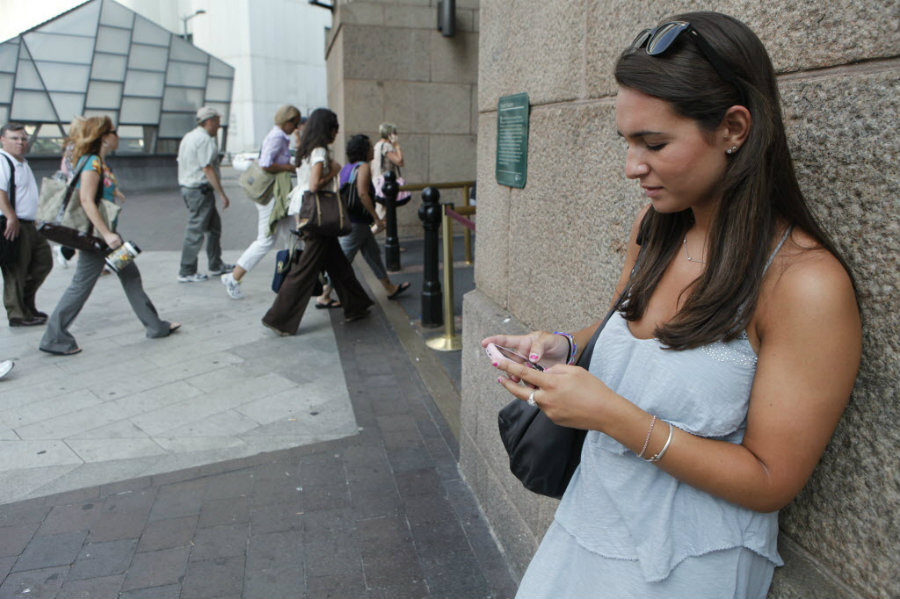Should you get an Invisible Boyfriend?
Loading...
Need a boyfriend, fast? Now you can get a fake one for $24.99 a month.
For that price, “Invisible Boyfriend” (and “Invisible Girlfriend”) will let users customize their very own virtual significant other, complete with name, bio, photo, and a fictional account of how they met. A team of Web developers, entrepreneurs, and what the site describes as "romance experts" – actual people, not bots – then creates the user’s desired partner and crafts real-time replies to texts, leaves voice messages, and even sends one handwritten postcard a month.
“This platform helps you create credible, reasonable stories that you can bring home to curious mom, your buddies, and coworkers,” according to the app’s site.
The concept is simple: “Invisible Boyfriend” (or “Girlfriend”) is for anyone who wants to catch a break from the expectations of being in a relationship, the site says, or for someone who is looking for a safe space to hone real-world social skills.
The app can also be used by people in same-sex relationships who are hiding from disapproving relatives, co-creator Matt Homann told Buzzfeed after the beta version of “Invisible Girlfriend” came out in 2013. It’s also good for deflecting unwelcome advances from a colleague, Mr. Homann added, or for those who just want to focus on work instead of relationships.
It can even “inspire just enough jealousy to jolt that special person into committing,” notes the founders’ blog.
News of the app, which launched its current version on Jan. 20, has already gone viral, and no surprise: Virtual boyfriend apps have been around for a while, and the “Invisible” series promises the most realistic fake relationships in the market for those who are looking for the full experience without the strings.
But some warn of the potential fallout of having a perfect, imaginary partner. Journalist Caitlin Dewey tried “Invisible Boyfriend” for herself and found that even knowing her partner was fake didn’t stop her from thinking she could, over time, develop real feelings for him (or them, as it were).
“All things considered,” Ms. Dewey wrote for The Washington Post, “it’s hardly a jump to suggest someone might develop feelings for a ‘believable’ virtual human who caters to her every whim. That’s basically the plot of ‘Her,’ isn’t it?”
Citing the virtual world Second Life and the many relationships that carry on between avatars there, she added that there are plenty of people who fall in love with men or women who are only as real as the facts they choose to share.
Columnist Jess Zimmerman, who also tested the app, found that she was uneasy with the idea that real people were behind the fake persona she had created.
“For me,” she wrote for The Guardian, “this app falls squarely into the Uncanny Valley between intimacy and estrangement, in a way that makes it suddenly feel unsafe.” Despite being a self-proclaimed fan of social robots, she added, “apparently there are some relationships that even I prefer to have offline.”
Using “Invisible Boyfriend” to deceive friends and family – one of the app’s the main selling points – could also be a problem in the long run. It’s a small, almost silly deception, but in an article on lying, psychologist and author Susan Krauss Whitbourne wrote:
According to psychologist Bella DePaulo, we tell white lies to avoid hurting someone or to avoid conflict. Often these white lies backfire, as when we’re found out, we look worse than we would have by telling the truth. White lies can also build on themselves, leading to bigger lies that people tell to cover up their smaller ones. By telling lie after lie, we eventually can suffer from building a false version of reality that increasingly distances us from our real selves. After repeatedly lying about the same thing, we may even come to believe it is true.
Still, in an interview with the Post’s Dewey, Homann defended his invention, saying that people who buy and use “Invisible Boyfriend” are well aware of what the app does.
“You’re in on the joke,” he pointed out. “You know it’s a service you’ve signed up for. It’s not a substitute for love.”








